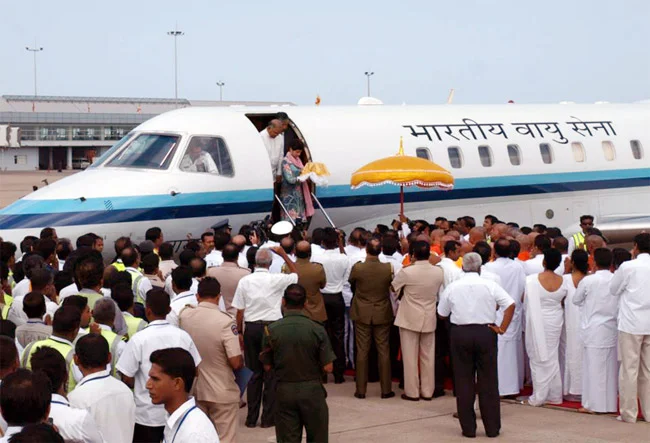Worship of the Relics
Throughout much of the Buddhist world, the items discovered at Piprahwa are referred to as the Kapilavastu relics. Millions of devotees pay homage whenever they are displayed. Veneration of relics associated with the Buddha has been a widespread feature of Buddhist devotional practice since immediately after the paranirvana of the Buddha. For many the Buddha is perceived to be ‘alive’ in his relics; it is believed that the relics themselves personify the spiritual forces of a living Buddha. In his book 'Relics of the Buddha' Professor John Strong observes that some make no distinction between ‘a living Buddha and a collection of relics – both make the sacred person equally present as an object of worship’. Numerous legends have surrounded the history of relics as they facilitated the spread of Buddhism and provided legitimacy to rulers. The Indian Government has only allowed the relics excavated at Piprahwa by K.M. Srivastava in 1971-73 to be viewed outside of India on seven occasions; the first time was in 1978 when they were exhibited in Sri Lanka and drew crowds of nearly 10 million people. This was followed by exhibitions in Mongolia in 1993, Singapore in 1994, South Korea in 1995 and Thailand in 1996. In 2012, at the request of the Sri Lankan President, Mahinda Rajapaksa, the relics once again travelled from India to Sri Lanka to commemorate the 2600th anniversary of the Enlightenment of the Buddha. The relics were brought to Sri Lanka by a delegation led by the Indian Minister of Culture Kumari Selja. Over a two-week period the relics toured the country and again drew crowds of many millions.
The relics arrive in Sri Lanka 2012
The Relics from the waskaduwe Vihara on display IN Sri LAnka 2015
The Speaker of the Indian Parliament stated that the relic exhibition ‘would have a calming and peaceful effect in the region and spread the word of non–violence’.
In 2015, Sri Lanka displayed three relics from the original Piprahwa discovery at three different locations. An estimated 2 million devotees venerated the relics over four days. In October 2015 to celebrate the 60th anniversary of Dr Ambedkar embracing Buddhism, the same relics from the Waskaduwe Vihara were exhibited outside of Sri Lanka for the first time, specifically in Nagpur, India. An estimated 5 million worshippers were expected to arrive at the exhibition aimed to commemorate Dr Ambedkar, the architect of the Indian Constitution, however, these figures were far exceeded and over 8 million people paid homage to the relics.
In 2021, to mark the opening of Kushinagar International Airport, relics from the Waskadue Vihara were afforded the status of state guest by the Indian Ministry of Culture. Alongside a 123-member delegation led by Sri Lankan cabinet minister Namal Rajapaksha, relics from the discovery at PIprahwa arrived on the first international flight into Kushinagar. Once the relics had arrived safely from Colombo the new airport was then inaugurated by Indian Prime Minister Narendra Modi.
In February 2024, four bone fragments of the Lord Buddha, discovered at Piprahwa, travelled to Thailand, where for the first time they were exhibited alongside relics of two chief disciples of the Buddha. Despite falling under the AA category of antiquities and art treasures, which typically prohibits lending for exhibitions, the Thai Government made a special request for the relics to be brought to Thailand. The relics travelled from India in a special India Air Force plane and were received in Thailand as a state guest. The exposition was organised to commemorate the friendship between the people of India and Thailand and also to coincide with the birthday of King Maha Vajiralonkorn. The Thai King and his wife visited the relics, spending nearly an hour worshipping at the site. Over one million Buddhists visited Sanam Luang in Bangkok before the relics travelled to three other cities where hundreds of thousands more Buddhists were expected to visit the sacred items.
Today, the relics discovered at Piprahwa are revered by Buddhists all around the world. These relics can be found in various locations, including the Golden Temple in Bangkok, and several temples in Sri Lanka (including the Waskaduwe temple in Kaltura). the Jodo Shinsu Buddhist Centre in California and the Grande Pagode de Vincennes in Paris. The bone fragments from Srivastava's excavation are housed at the National Museum in New Delhi. As for W.C Peppé's share of the discovered jewels, they have remained in the possession of the Peppé family since 1898.

